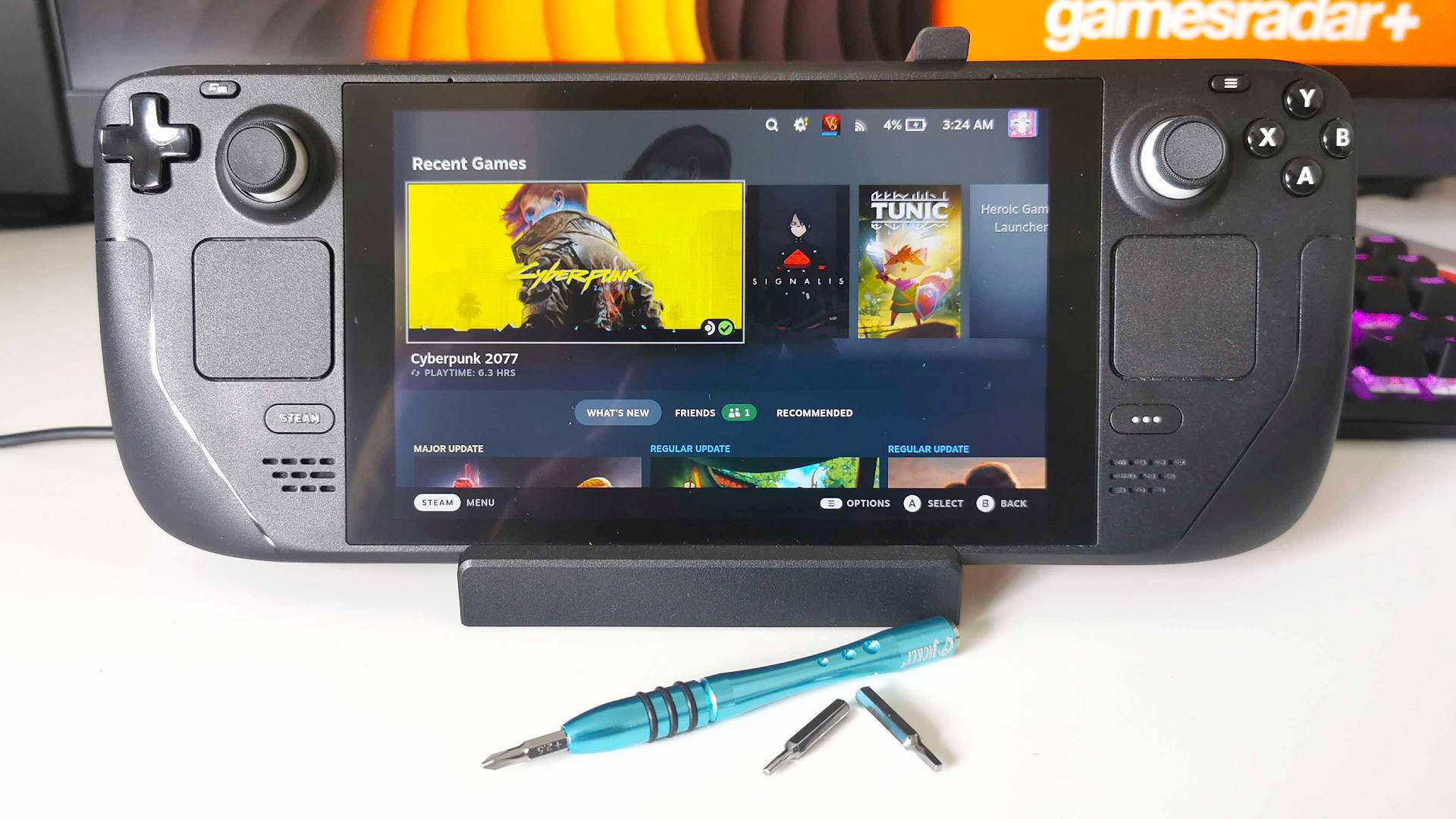Your future Steam Deck could have a removable battery, thanks to the EU
Just like your old Nokia!

If you’ve ever looked up how to replace a Steam Deck battery, you’ll already know the process is a bit of a faff. Thankfully, there’s now a chance your future handheld, whether by Valve or another manufacturer, will feature a removable juice box, as the EU is planning on rolling out a regulatory framework for batteries. The measure aims to aid sustainability and contribute towards the European Union’s climate neutrality goal, but it’ll hopefully also make swapping portable PC parts a whole lot easier.
Like it or not, batteries will diminish over time, and that includes handhelds like the Steam Deck. It’s a pretty annoying fact of portable life, especially since the device is by right one of the best gaming PCs for on-the-go play. Sure, something’s got to give when cramming a mini machine into something the size of most graphics cards these days, but given Valve’s open approach to PC tinkering, it feels like you should be able to simply swap out parts.
That’s an idea the EU appears to agree with at least, as the European Parliament has shared plans for a ‘regulatory framework for batteries'. The newly published proposal outlines rules that address the “design, production and waste management of all types of batteries sold in the EU,” which would theoretically apply to smartphones, consoles, tablets, and portable PCs.
Specifically, the paper states that device batteries will “have to be designed to be readily removable and replaceable by the end-user,” meaning you won’t have to wield a screwdriver or heat gun to make the swap. The catch? Well, the new rules are unlikely to apply to the Steam Deck 2 or any other mobile device that may arrive relatively soon, as they won’t kick in until at least 2027.
Still, the battery rules are a massive step in the right direction, and they’ll hopefully get companies across the board thinking about part modularity. Both the Steam Deck and its higher-spec Asus ROG Ally rival aren’t renowned for their battery life, so it’d be pretty neat to be able to arm either successor with a higher-capacity cell that lasts beyond the two-hour mark. In turn, providing battery access may subsequently provide SSD access too, bringing us ever closer to the idea of completely home-serviceable small devices.
That’s not to say you shouldn’t pick up a new handheld PC before 2027, as there are plenty of portable pals out there that pack a gaming punch. There are also ways to extend your battery life if you’re savvy about it, as compatible power banks will provide you with a boost if wall charging isn’t an option.
Today's best handheld deals
Aiming to game for longer on the go? Take a peek at our best gaming laptop picks for mobile machines with more stamina. Prefer power supplies over batteries? Check out the best Alienware gaming PCs for a selection of not-so-portable powerhouses.
Weekly digests, tales from the communities you love, and more

Phil is currently the Hardware Editor at GamesRadar+ who specialises in retro gaming, the best gaming handhelds like the Steam Deck, and more modern components like graphics cards. Having spent years offering up classic console advice and over a decade as a gaming journalist for big names like TechRadar, The Daily Star, the BBC, Den of Geek, and many more, Phil now dedicates their days to covering the latest news and offering up invaluable setup advice.


